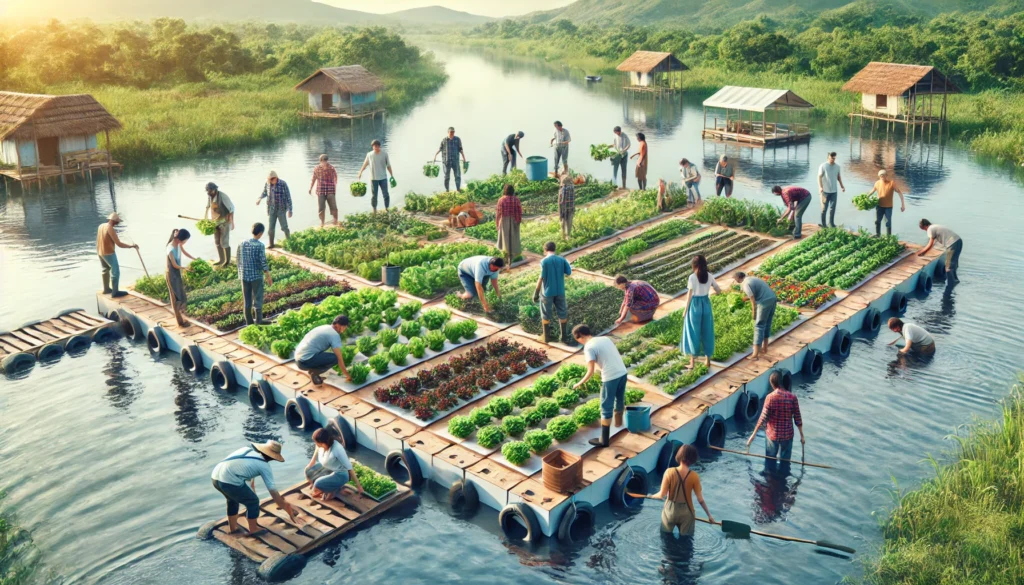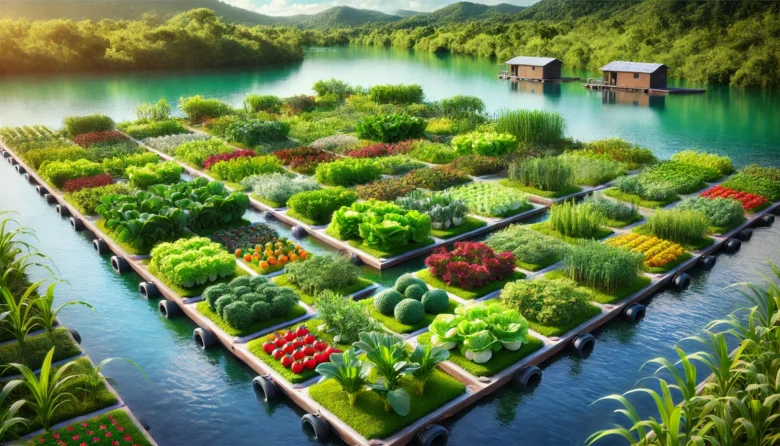Hello and welcome to an exciting journey into the world of floating farms! With rising sea levels becoming a global concern, innovative solutions like floating farms are gaining attention. These farms not only provide a sustainable way to grow food but also offer a unique approach to tackling climate change. Let’s explore how floating farms can benefit India and the world.
What Are Floating Farms?
Floating farms are agricultural systems built on floating platforms. These platforms can be placed on rivers, lakes, and even oceans. The concept is simple yet revolutionary: create fertile land where there is none. Floating farms are designed to withstand changes in water levels, making them a viable solution for areas affected by flooding and sea level rise.
Why Are Floating Farms Important for India?
India, with its extensive coastline and many rivers, is especially susceptible to the effects of climate change. Rising sea levels and increased flooding pose significant threats to traditional farming. Floating farms offer a way to adapt to these challenges, ensuring food security and sustainable livelihoods for millions of people.
How Do Floating Farms Work?
Floating farms use a combination of modern technology and traditional farming practices. The platforms are often made from durable, lightweight materials and can be anchored to the seabed or allowed to drift with the currents. These farms can support various types of crops, from vegetables to rice, and even aquaculture.
Benefits of Floating Farms
Climate Resilience
Floating farms are designed to adapt to changing water levels, making them resilient to floods and storms. This is crucial for coastal regions and riverine areas in India that frequently experience extreme weather events.
Sustainable Agriculture
By utilizing water bodies for farming, floating farms help conserve land and water resources. They also diminish the reliance on chemical fertilizers and pesticides, fostering organic farming methods.
Food Security
Floating farms can significantly boost food production in areas where traditional farming is no longer viable. This helps ensure a stable food supply, even in the face of climate challenges.

Real-Life Examples of Floating Farms
The Netherlands’ Floating Dairy Farm
The Netherlands, known for its innovative approach to water management, has developed a floating dairy farm in Rotterdam. This farm produces milk and dairy products while adapting to rising sea levels. It serves as a model for other countries, including India, to explore similar solutions.
Bangladesh’s Floating Gardens
In Bangladesh, floating gardens have been used for centuries to grow vegetables and other crops. These gardens, made from water hyacinths and other local materials, float on water and provide a sustainable way to produce food during the monsoon season.
How Can India Benefit from Floating Farms?
Coastal and Riverine Areas
Floating farms can be particularly beneficial for India’s coastal states like Kerala, West Bengal, and Odisha, which are prone to flooding and sea level rise. Riverine areas in states like Assam and Bihar can also benefit from these innovative farming systems.
Urban Agriculture
As urbanization accelerates in India, floating farms can be incorporated into cityscapes to supply fresh produce to urban residents. This approach can help mitigate the urban heat island effect and enhance air quality.
Challenges and Solutions
Initial Costs
The initial investment for setting up floating farms can be high. However, the long-term benefits, including increased food security and climate resilience, make it a worthwhile investment. Government subsidies and support from NGOs can help mitigate these costs.
Technical Expertise
Setting up and maintaining floating farms require technical knowledge and expertise. Training programs and partnerships with research institutions can help farmers and communities adopt these new technologies.
How to Get Started with Floating Farms
Research and Planning
The initial step involves comprehensive research and planning. Identify suitable water bodies, understand local environmental conditions, and choose the right crops.
Community Involvement
Involve local communities in the design and implementation stages. Their knowledge and experience are invaluable for the success of floating farms.
Government and NGO Support
Seek support from government agencies and NGOs that focus on sustainable agriculture and climate adaptation. They can provide funding, training, and technical assistance.
Conclusion
Floating farms present a viable solution to the problems brought about by rising sea levels and climate change. By embracing this innovative approach, India can enhance its food security, support sustainable agriculture, and build resilience against climate impacts. Let’s explore and support floating farms for a greener, more sustainable future.
Author’s Note:
Thank you for exploring the fascinating world of floating farms with me. I hope this blog has inspired you to think about innovative solutions for climate change and sustainable agriculture. Together, we can make a difference!
G.C., Ecosociosphere contributor.




